Is a cucumber a fruit or a vegetable? Thanks to the fact that it grows from a flower and contains seeds, the cucumber is a fruit. But, like the tomato, it’s mainly used as a vegetable. In this guide, we’ll cover everything you need to know about growing cucumber plants that are tasty and sweet!
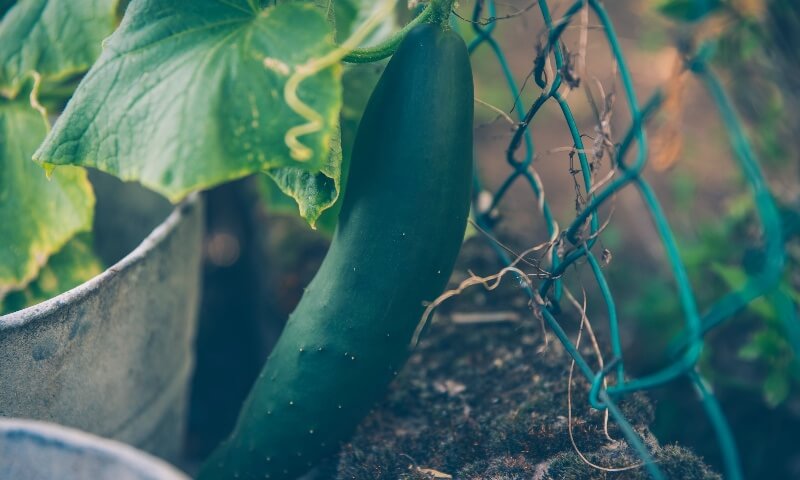
The humble cucumber is thought to have originated in ancient India, where it grew wild. As civilizations expanded, the cucumber traveled around the world and found its place as a traditional ingredient in many cultures.
From Buckingham Palace to the White House garden, the cucumber is a widely cultivated plant that is extremely popular amongst gardeners.
Types of Cucumbers
Cucumbers belong to the same family as melons (like watermelons) and squashes (like pumpkins and zucchini). There are hundreds of cucumber varieties that fall into two categories: slicers or picklers. The choice of cucumber depends on your personal preference for how you like to eat them.
There are two types of cucumber plants: vines or bushes. Vine types need space if they’re going to ramble or a trellis of sorts if you plan to grow them vertically. They tend to produce more fruit than the bush types of cucumber plants.
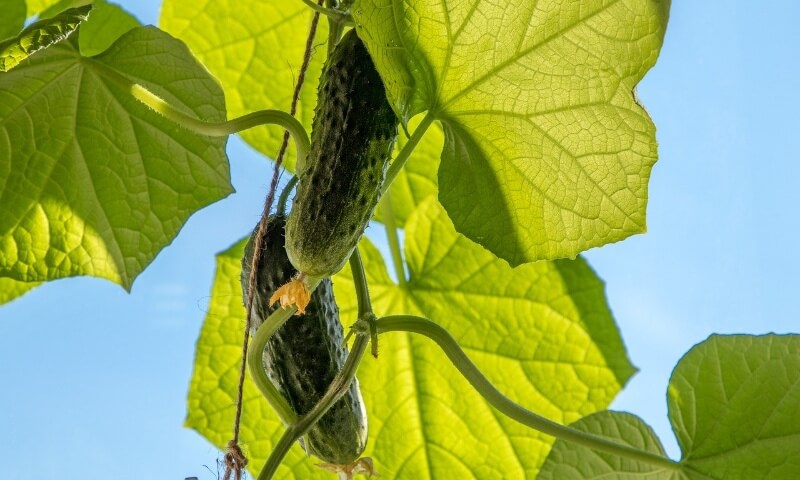
Bush types are smaller and a bit more robust so they do adapt well to pots. However, you’ll still have to provide some form of support so make sure your pot is large enough.
Tip: Before deciding which type to plant, consider your space. If you have lots of room, then a vine may a good option. If you are limited in space and are planning to grow cucumbers in a pot, look for a bush type.
Slicer Cucumbers
As the name suggests, slicer cucumbers are meant to be sliced and eaten fresh. These cucumbers are grown to be fairly long and, when sliced, give uniform circles.
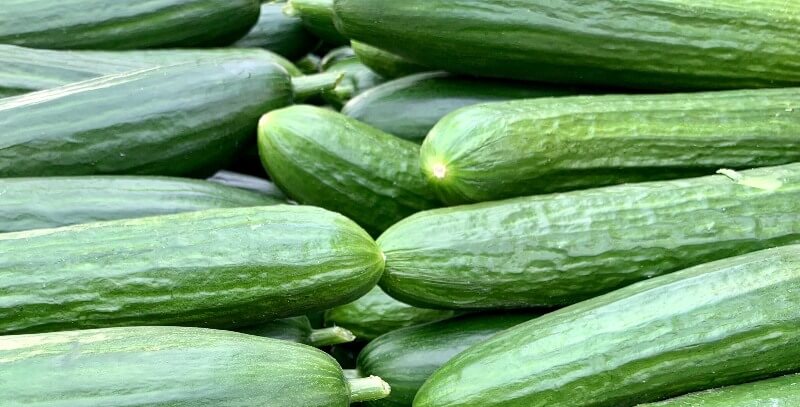
Possibly the most well-known slicer is the English cucumber which we find in our salads, sushi, and countless dishes. And, in some countries, that’s the only cucumber you’ll find in larger grocery stores unless you plant your own.
English cucumbers are dark green in color and fairly narrow, with a crisp almost sweet taste. Their skin is usually soft and easy to eat, and no peeling is required. These European varieties are usually bred to be grown in a greenhouse, so they might not do so well in a garden.
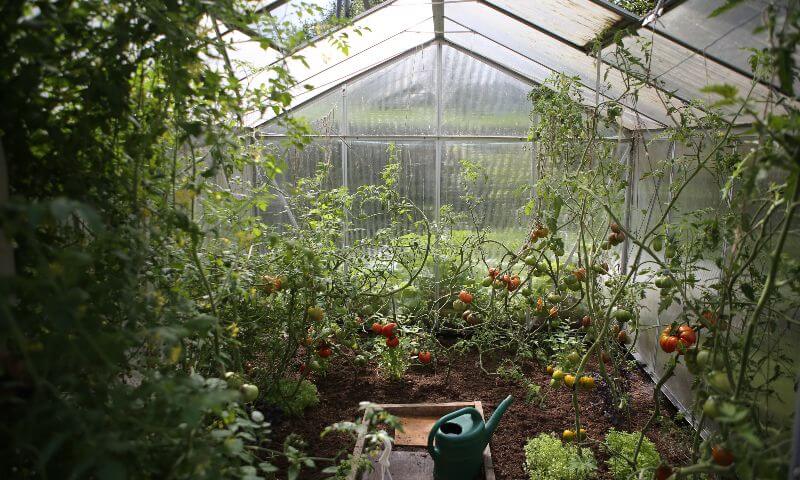
Within slicers, you’ll find numerous varieties that may have characteristics such as “burpless” cucumbers or “seedless.” For example, you might find a seedless English cucumber. These cucumbers are bred so that they are easier to digest. For example, “burpless” varieties have thinner skin and seeds that form later on as the fruit grows.
As a result, they cause less burping than varieties that have more seeds. If you are sensitive to onions and other foods that cause gas, you might want to grow a “burpless” or seedless variety of cucumber instead.
Pickler Cucumbers
Picklers are tough, small cucumbers that are hard to eat raw. They usually have a rough skin that has bumps or spines. They are bred to still be crunchy even after they have been pickled, hence the name “pickler.” If you like pickling and preserving foods, then this is a good option to plant.
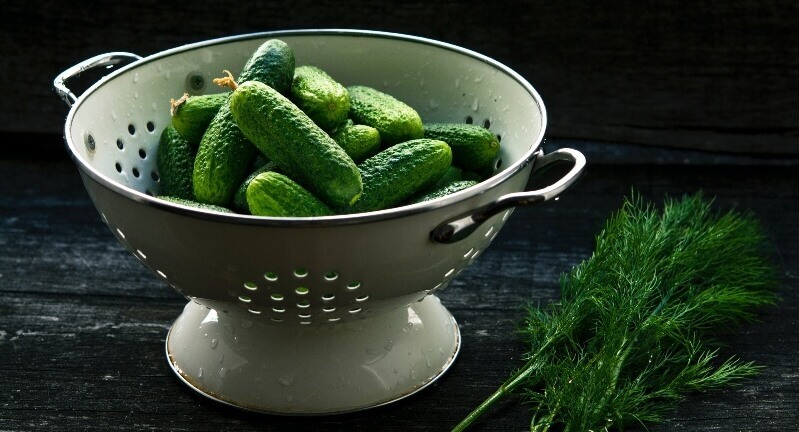
Tip: Both types of cucumbers tend to be sweeter and less bitter if you pick them when the fruit is still small and not fully mature.
With hundreds of varieties, it can be difficult to choose which cucumber to grow in your garden. Cornell University has a great rating guide on cucumber varieties that covers a description of each variety as well as days to maturity.
Cucumber Information and Facts
The cucumber, Cucumis sativus, has long been associated with health, weight loss, and beauty treatments. It’s about 95% water and nutrient-rich. This makes it a great addition to a healthy diet.
According to the World’s Healthiest Foods, cucumbers have the following health benefits:
- They have a wide range of nutrients such as vitamins and minerals to nourish your body and immune system.
- Cucumbers, particularly the seeds, are rich in phytonutrients. These compounds help protect our cells from inflammation and damage.
- They are low in calories but high in water which helps you feel full and eat less.
- Researchers are currently studying the benefits of cucumbers to help with conditions such as diabetes and cancer.
Cucumber Nutritional Facts
According to the USDA, 100g of cucumbers contains:
| Energy | 15 calories |
| Carbohydrates | 3.63 g |
| Protein | 0.65 g |
| Fat | 0.11 g |
| Vitamin C | 2.8 mg |
| Water | 95.23 g |
How to Propagate Cucumbers
Cucumbers can be propagated by seeds or cuttings. If you are using cuttings, make sure that they come from a plant that is healthy and green.
How to Grow Cucumbers From Seeds
It’s fairly simple to grow cucumbers from seeds. However, it’s important to remember that cucumbers love warmth, so don’t sow seeds too early in spring.
The cucumber seedlings should start sprouting after two weeks, depending on how warm they are.
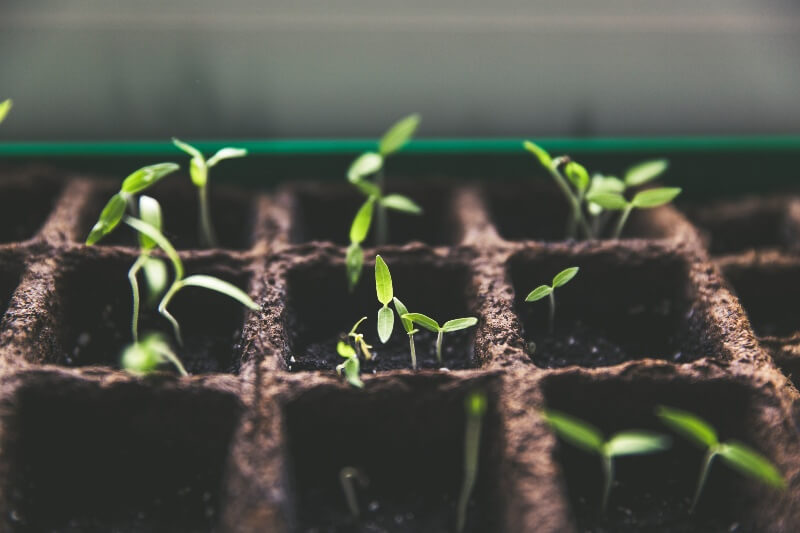
One of the more successful ways is to grow seeds in a planter and then transplant the young plant as soon as it’s warm. Below the steps to grow cucumbers in a planter:
- Choose your preferred cucumber type and soak the seeds in water overnight.
- Fill a seed planter with a general-purpose potting mix.
- Sow 2 seeds into each compartment; about 1 inch (3 cm) into the soil.
- Water and put the seed planter in a warm place. (At least 68°F or 20°C).
- Once the seedlings appear (2-3 weeks depending on the temperature), remove the weakest one and leave the other in the pot. Be sure to keep the soil moist and put the planter in dappled sunlight.
- The saplings are ready for transplant once they have produced the third leaf.
Tip: The best time to transplant into the garden is late spring to early summer. The soil and temperature will then be warm.
How to Propagate Cucumbers From Cuttings
The best time to take stem cuttings is early morning when the stems are well hydrated. You will need pruning shears, powdered rooting hormone (indole-3-butyric acid), a planter with potting soil, and a fine-mist spray bottle. Here are the steps to propagate cucumbers from cuttings:
- Stem cuttings need to be 3-5 inches (8-12 cm) in length so choose a plant that is growing well.
- Cut across the stem with sharp pruning shears ⅛ of an inch (3 mm) below the second set of leaves.
- Use your fingers to pinch off the second set of leaves at the leaf node. (Where the leaf and stem meet.)
- Dip the end of the stem into the powdered rooting hormone. Make sure that the powder covers all the way past the leaf nodes of the pinched-off leaves. Gently tap the stem to knock off any excess powder.
- Plant the stem cutting into the planter. Make sure that the soil covers the leaf nodes.
- Water daily using the spray bottle to saturate the soil. Very important, don’t let the soil become waterlogged.
- In about 3 weeks, the new plant should be ready to be transplanted.
Before You Plant Cucumbers, Consider These Factors
There are a few important things to remember when planting cucumbers:
Space
Cucumbers love space, especially the vine type. If you are going to plant vine type cucumbers, you have two options: either grow them vertically up a trellis of sorts or plant them a minimum of 3 feet (about 1 m) away from each other.
The reason why it’s important to have lots of space around the cucumber plants is that it prevents a disease called powdery mildew that’s caused by moisture. When the vines grow up a trellis or have sufficient space around them, the air flows and drys out any moisture from rain, watering or dew very quickly. This is one of the best ways to prevent mildew from forming.
If you are planting a bush-type cucumber, make sure that you space them at least 1 to 1 ½ feet apart (30-45 cm).
Tip: Don’t plant cucumbers near potatoes. They will compete for water and nutrients.
For more on potatoes, read The Potato Plant: The Definite Guide on Growing and Caring for Potatoes.
Good soil
For cucumbers to thrive, they need well-drained, highly-fertile soil with a pH that’s close to neutral. Cucumbers are very susceptible to stem rot which is why it’s important to have soil that drains well. If your soil is quite heavy on the clay, add some sand to help it drain.
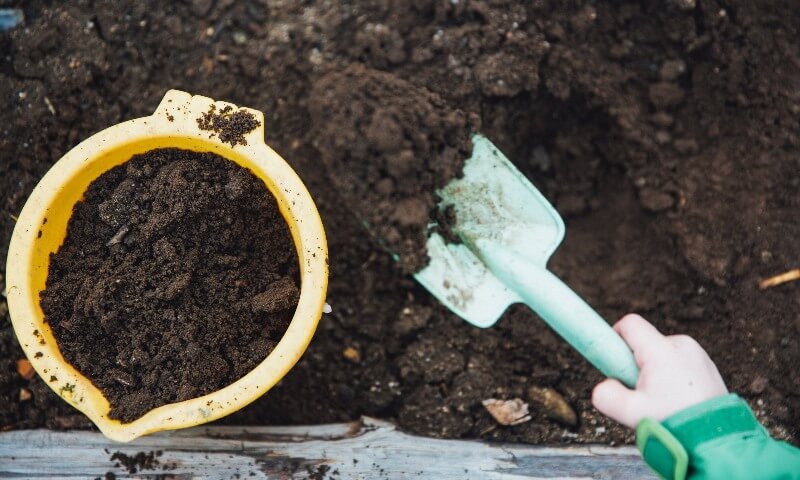
Make sure that the soil is also rich in compost. This will help give the plant all the nutrients it needs plus it will help loosen the soil. It will also improve the nitrogen content which will help them grow. You can also use a good all-purpose fertilizer that has a bit more nitrogen.
Tip: Planting legumes, like beans and peas, near cucumbers will help boost the nitrogen content of the soil.
Full sun
Cucumbers love full sun and if you can find a spot that has about 9 hours of sun a day, they’ll be very happy but 5-7 hours is also good.
Tip: If possible, select an area that gets early morning sun. This will allow the cucumber to dry off quickly and prevent powdery mildew or stem rot.
Consistent watering
Cucumbers need lots of water so make sure you have a reliable source. The best way is to thoroughly water the roots so that it soaks into the ground at least 8 inches.
Tip: Watering in the morning is ideal because it gives the soil time to dry out.
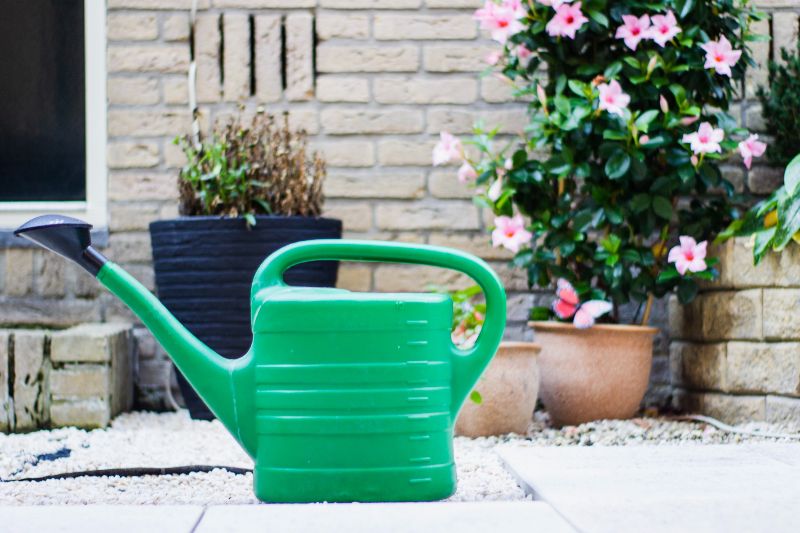
How to Plant Cucumbers
Planting a cucumber plant is fairly simple once you’ve decided on the above factors. The best time to plant cucumbers is mid to late spring, once the soil has warmed up.
Cucumbers love warmth, so if it’s still a bit chilly, rather wait until it’s warmer.
How to plant a vine cucumber with trellis
If you are planting to grow the cucumbers up a trellis, plant them as close to the trellis as you can. This will help the plant grow vertically as soon as it forms tendrils. There’s no need to buy a fancy trellis, an ordinary wooden trellis will be fine.
If you have a long stem, create a small mound to secure the stem rather than burying it deeper into the ground. This will help keep the stem healthy.
Tip: If you are using a netting of sorts or it looks like the vine is struggling to climb, use a greenhouse clip to give the plant a bit more support.
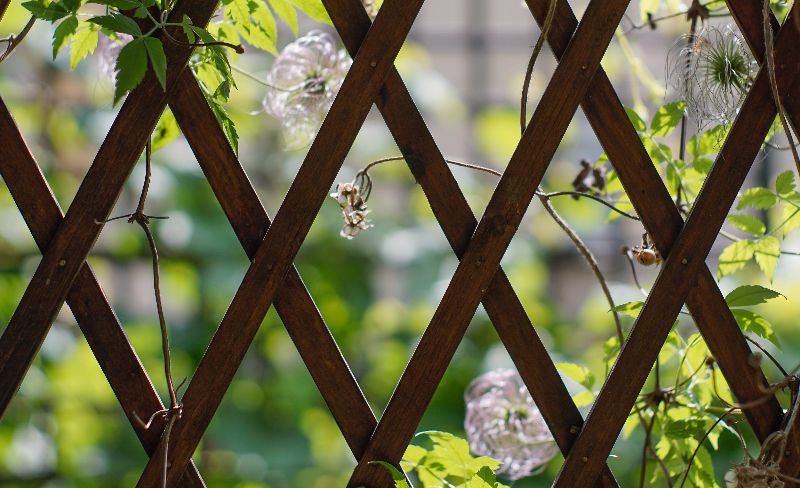
How to plant a vine or bush cucumber with no trellis
If you are planting cucumbers without a trellis, all you do is create a mound of soil and plant one plant in the mound. Using a mound will help lift the main stem above the ground, which will also help prevent stem rot.
Remember to space out the mounds by a minimum of 3 ft (1 m) and don’t forget to add compost.
How to plant cucumbers in containers
As mentioned, bush-type cucumbers are more suited for containers because they are smaller and robust.
When planting in a container, be sure to keep the main stem above the soil as well. The soil in the container should be loose and have good drainage.
Tip: You can use a plastic or ceramic pot for cucumbers. Make sure that there are plenty of drainage holes. A good size would be at least 12 inches across by 8 inches deep (30 cm by 20 cm).
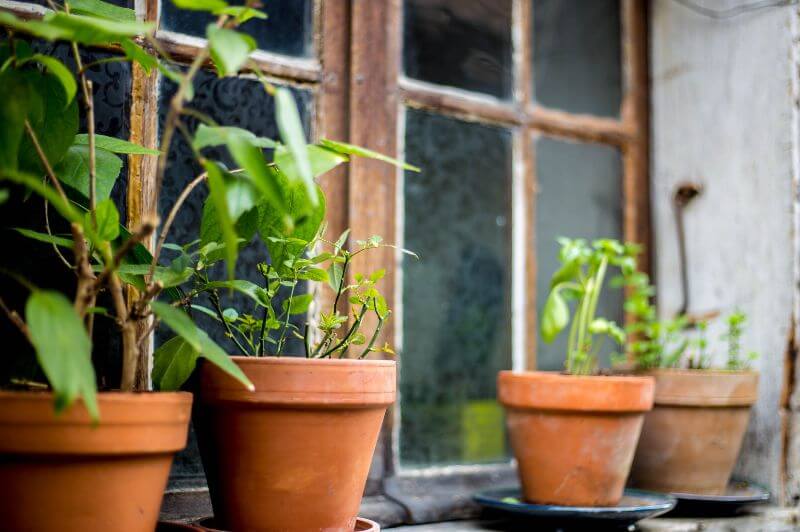
Top Tips for Growing Cucumbers
We’ve already covered many tips on growing your cucumbers. But, here are a few more to help you grow cucumbers that are sweet and tasty.
Choose a variety that is disease resistant
When buying cucumber seeds, look for varieties that have been bred to resist common diseases. For example, the Orient Express cucumber has been bred to withstand downy mildew, powdery mildew, cucumber mosaic virus, and many more conditions.
Know your region and choose a cucumber that flourishes there
Visit local nurseries or organic farmers and find out what cucumber varieties do well in your particular country and region.
Water all around the plant and keep them stress-free
If the soil around the plant is watered unevenly, the fruit might turn bitter because the plant is stressed. Make sure to water all around the plant to prevent this from happening.
Keep the soil fertile
Once the plants have been growing for about 4 weeks, side-dress the cucumber plants with a couple of handfuls of compost or fertilizer. Leaves that are pale and yellow indicate a deficiency in nitrogen. If the leaves are bronze, the plant lacks potassium.
Insects love cucumbers too
Aphids love cucumbers. Although they might not damage the cucumber directly, they can transmit the mosaic virus that can kill your plant. The best way to get rid of aphids is to spray them off with a forceful stream of water. Be sure to wash your hands before touching other cucumber plants.
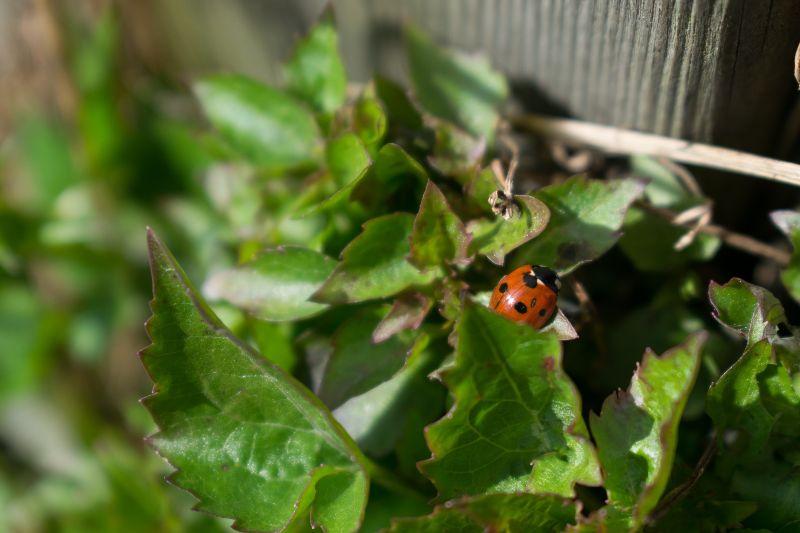
Other insects include the cucumber beetles (striped and spotted) and vine borers. You can keep young plants safe by putting them in tents made out of fine netting. Be sure to remove the netting before temperatures get too hot.
Marigolds are said to deter beetles and insects. They are a great companion plant for cucumbers, so consider planting marigolds near your vines or bushes. Oregano and dill are also said to repel insects, so plant a few of these herbs around your cucumbers.
Keep an eye out for disease
Apart from being careful to prevent stem rot and overwatering, there are few things you can do to keep your plants healthy.
- Remove any infected plants. If your cucumbers do get infected by cucumber mosaic virus, be sure to remove them from the rest and wash your hands to prevent cross-contamination.
- Keep the ground weed-free. Air circulation is very important to keep powdery mildew at bay. Weeds can prevent the plant from drying out by preventing the air from circulating. Some weeds are also susceptible to mosaic viruses and could infect your plants.
- Don’t wet the leaves. Cucumber scab is a fungal infection that’s caused by the leaves being wet or remaining wet. You can avoid this by buying a variety that is resistant to scab, spacing your plants adequately, and avoiding wetting the leaves.
For more help on maintaining your cucumbers, visit Cornell University’s growing guide.
Don’t forget to prune them
When a cucumber plant is growing well, it sends out shoots laterally from the main vine. These shoots need to be pruned to help keep the plant healthy.
The best time prune is when the plant is at least a couple of feet above the ground and is flowering.
Pruning improves the yield as well as the quality of your cucumbers. Here’s a great video from Spring Hill Farms that shows you how they prune their cucumbers.
When to Harvest Cucumbers
Most cucumbers will be ready to harvest within 50-70 days. The seed packet should give you an indication of your variety but cucumbers grow very quickly, so as soon as the first female flower (you can identify the female flower because it has a tiny cucumber below it) has opened, it should be 8-10 days before you get a cucumber.
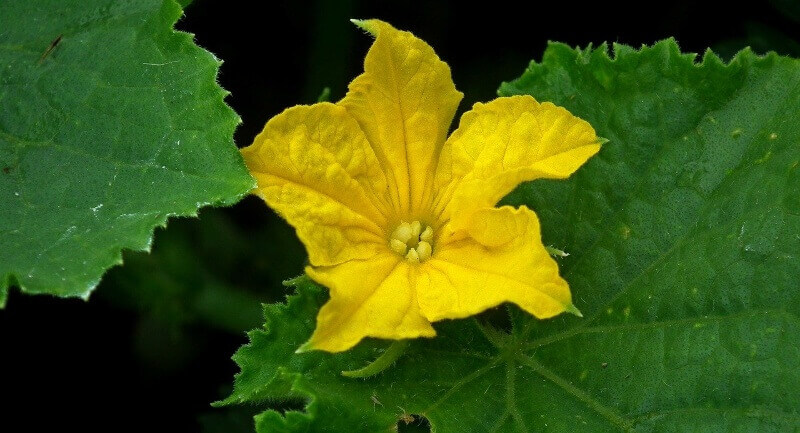
It’s best to harvest them when they are small and tender because they shouldn’t be bitter. Slicing cucumbers should be about 7-9 inches long (18-23cm) and pickling will be about 3-4 inches (8-10 cm) long. Any bigger and they could be bitter and flavorless.
Top cucumber harvesting tips
- Use a sharp knife or pruners to slice the cucumber off the vine to prevent damaging the plant.
- Harvest in the morning when it’s cool.
- The more you harvest when the fruit is young, the more your plant will produce, especially if it is a vine-type.
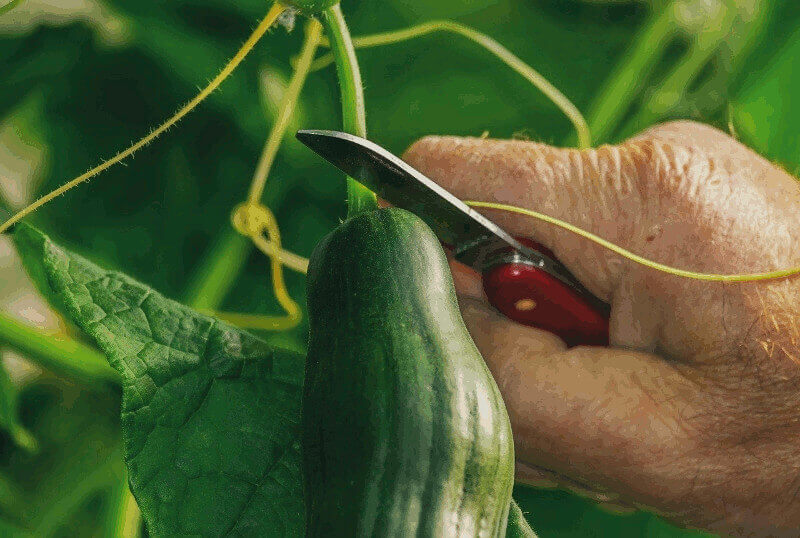
How Should You Store Cucumbers?
To help cucumbers stay fresh, keep a short 1-inch piece of stem on the end of the cucumber. This will keep the end of the cucumber from rotting.
After harvesting, wash and dry the cucumber and wrap them in a paper towel or a clean dishtowel. Place them in a plastic bag (resealable) and store them in the crisper drawer of your fridge.
Frequently Asked Questions on Cucumbers
Our readers often contact us with questions about gardening and vegetables. Here are the answers to some of these questions.
Is cucumber a fruit or vegetable?
Thanks to the fact that it grows from a flower and contains seeds, the cucumber is a fruit. But, like the tomato, it’s mainly used as a vegetable.
What is the nutrition of a Cucumber?
According to the USDA, 100g of cucumbers contains: Energy – 15 calories; Carbohydrates- 3.63 g; Protein- 0.65 g; Fat -0.11 g. It also contains calcium, iron, magnesium, and vitamin C.
How should you store cucumbers?
To help cucumbers stay fresh, keep a short 1-inch piece of stem on the end of the cucumber. This will keep the end of the cucumber from rotting. After harvesting, wash and dry the cucumber and wrap them in a paper towel or a clean dishtowel. Place them in a plastic bag (resealable) and store them in the crisper drawer of your fridge.
Start growing your own Cucumber Plants at Home
As you can see, with a bit of preparation and planning, you can successfully grow your own cucumbers at home.
The first thing is to do your research and decide whether you will be growing vine cucumbers or bushes. After that, choose your favorite type of cucumber and, in particular, one that grows well in your area.
Keep in mind space, sun, good soil, and water – and your cucumbers should be sweet and tasty! As with all things, it just takes time and care.
Happy growing!

Leave a Reply